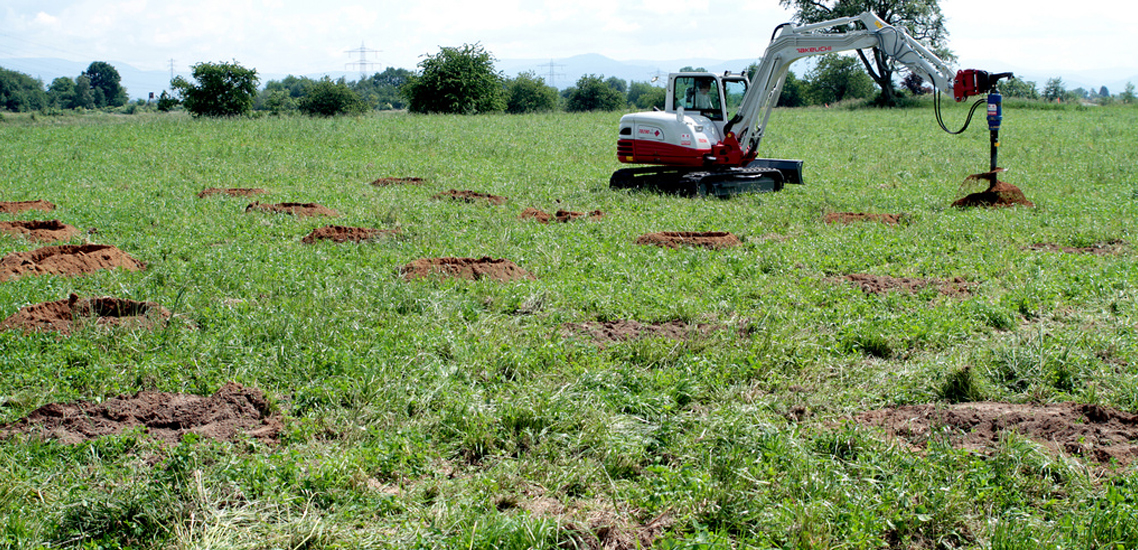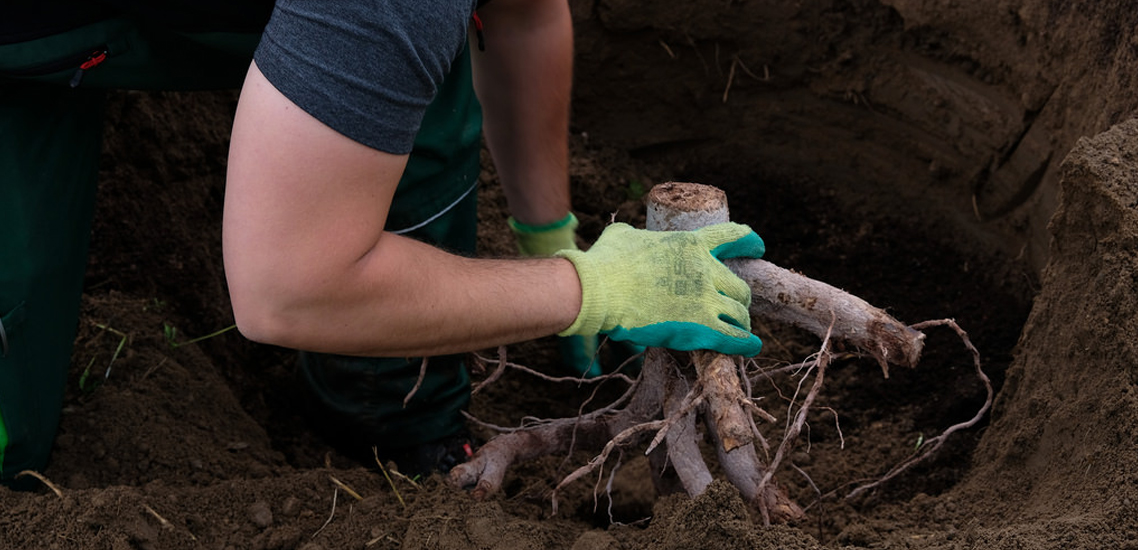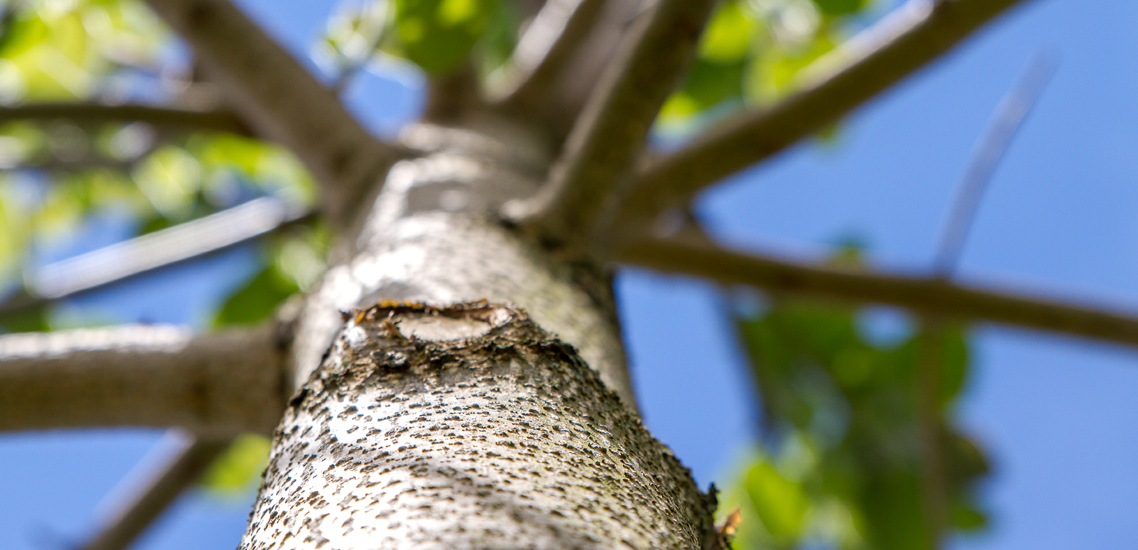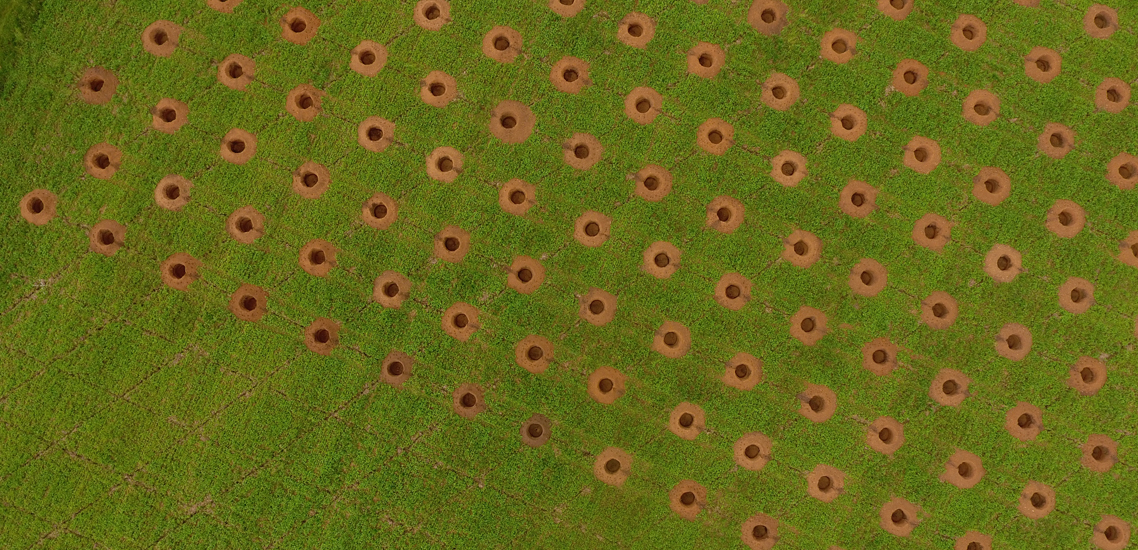Bietigheim, located 17 kilometres to the south of Karlsruhe, has one more thing to see. Here you can see a total of 20,000 plants of a very special type growing on 33 individual areas. If you do not know the paulownia, you will be amazed just how unbelievably fast it grows. In June the three year old roots of this paulownia hybrid that originated in China were planted there. The plants flourished on so-called short rotational plantations, meaning that the trees are planted out on a field.

No forest areas are created through the rapid growth (they are planned to be ready for felling after just twelve years). As before, it involves agricultural areas, but for this period they will be used as a wood plantation instead of for maize and barley. The trees grow so rapidly in the year after the roots have grown that a trunk that is 3.5 metres high grows and turns woody (lignifies) by the time of the first frost. This, and the good care of a team that has been especially trained for this, means that these trees then increase in mass in the next few years to such an extent that they can be sold as top-quality wood on the world markets at the best prices.

For the agricultural area itself, this means that it can first of all recover and regenerate itself, because no fungicides or herbicides will be used during the whole time that it is used as a tree plantation. No special fertilizer will be used, as the paulownia is an undemanding plant. The paulownia has a taproot. For this reason the plantations make a positive contribution to the properties of the soil of the adjacent fields: They store more water and have a climate-regulating effect on the adjacent fields and the micro-climate of the adjoining areas.
The paulownia is not the first timber tree from which the people of Bietigheim will profit commercially. In the past it was the pine that used by the "Kieholzbuwe" ("pinewood farmers") as the people of Bietigheim used to be known. Previously very many pine trees used to grow within the boundaries of Bietigheim, which the locals used to tap to obtain pine resin. If a pine tree is felled, its root and stump was left in the ground for several years so that the roots could enrich themselves with resin. Finally these were dug out and brought to the farms with great effort. There the root that was saturated with resin was broken up into small pieces with axes, hammers and saws that were tied up into bundles of ten pieces each. This provided a welcome side income up until the 1920s.

Now a new chapter is being opened in Bietigheim through the paulownia. It is the tree of the future: Due to the climatic warming, there is a very good chance that it will be among the winners among the native tree flora. Its properties are little known here. For example, its wood is a tone wood and has been used in China for centuries to construct musical instruments. Due to the stricter Convention on International Trade in Endangered Species of Wild Fauna and Flora (CITES) the trade in musical instruments (also old instruments) has become distinctly more difficult. The following applies for a new instrument: No tropical wood!
Here the wonder tree that is growing in Bietigheim right now can offer a remedy. The extremely light yet robust wood of the paulownia that has a combustion point of around 420°C is almost ideal for this and many other areas of use requiring high-quality wood.



